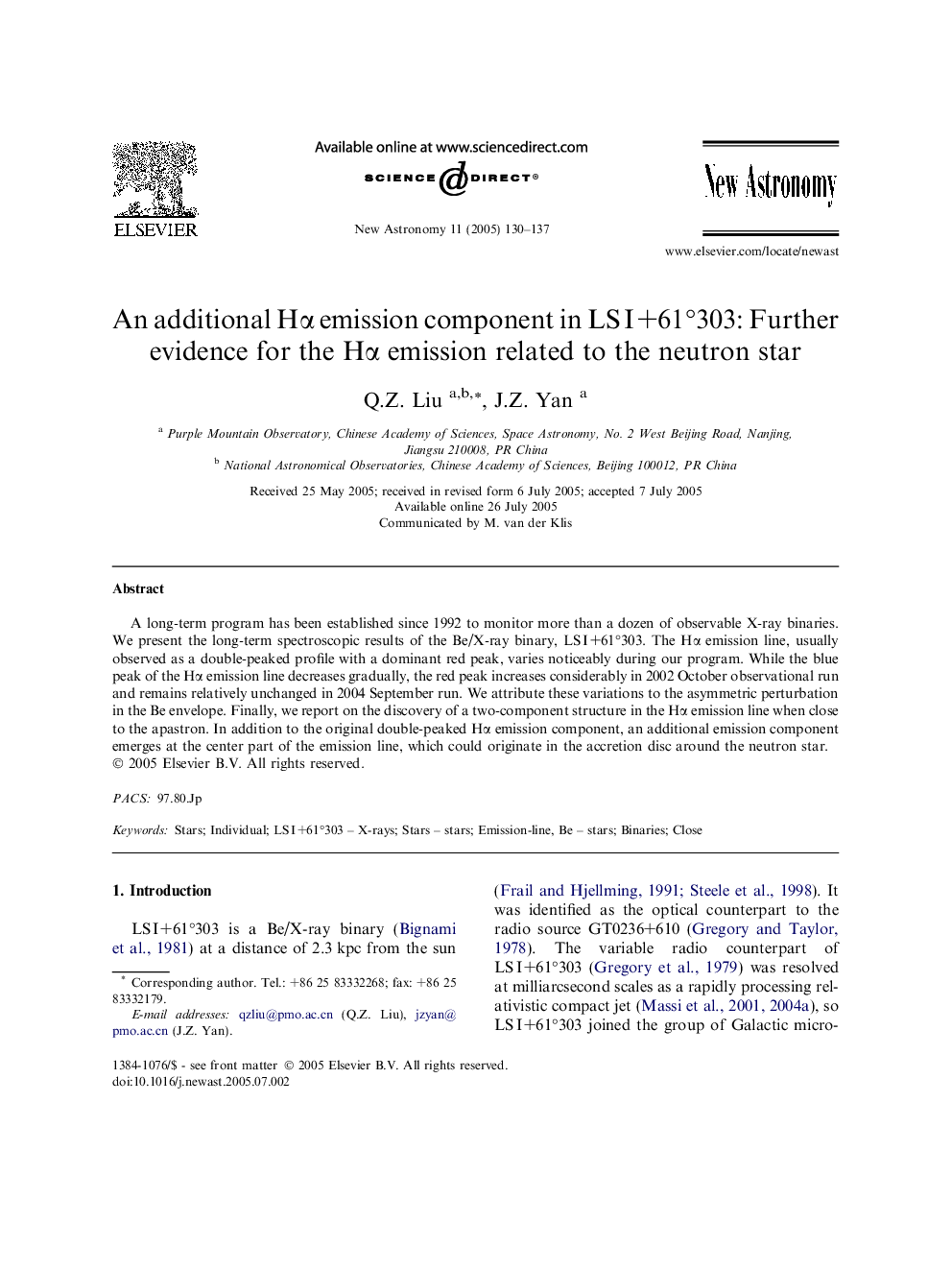| Article ID | Journal | Published Year | Pages | File Type |
|---|---|---|---|---|
| 10704627 | New Astronomy | 2005 | 8 Pages |
Abstract
A long-term program has been established since 1992 to monitor more than a dozen of observable X-ray binaries. We present the long-term spectroscopic results of the Be/X-ray binary, LS I +61°303. The Hα emission line, usually observed as a double-peaked profile with a dominant red peak, varies noticeably during our program. While the blue peak of the Hα emission line decreases gradually, the red peak increases considerably in 2002 October observational run and remains relatively unchanged in 2004 September run. We attribute these variations to the asymmetric perturbation in the Be envelope. Finally, we report on the discovery of a two-component structure in the Hα emission line when close to the apastron. In addition to the original double-peaked Hα emission component, an additional emission component emerges at the center part of the emission line, which could originate in the accretion disc around the neutron star.
Keywords
Related Topics
Physical Sciences and Engineering
Physics and Astronomy
Astronomy and Astrophysics
Authors
Q.Z. Liu, J.Z. Yan,
